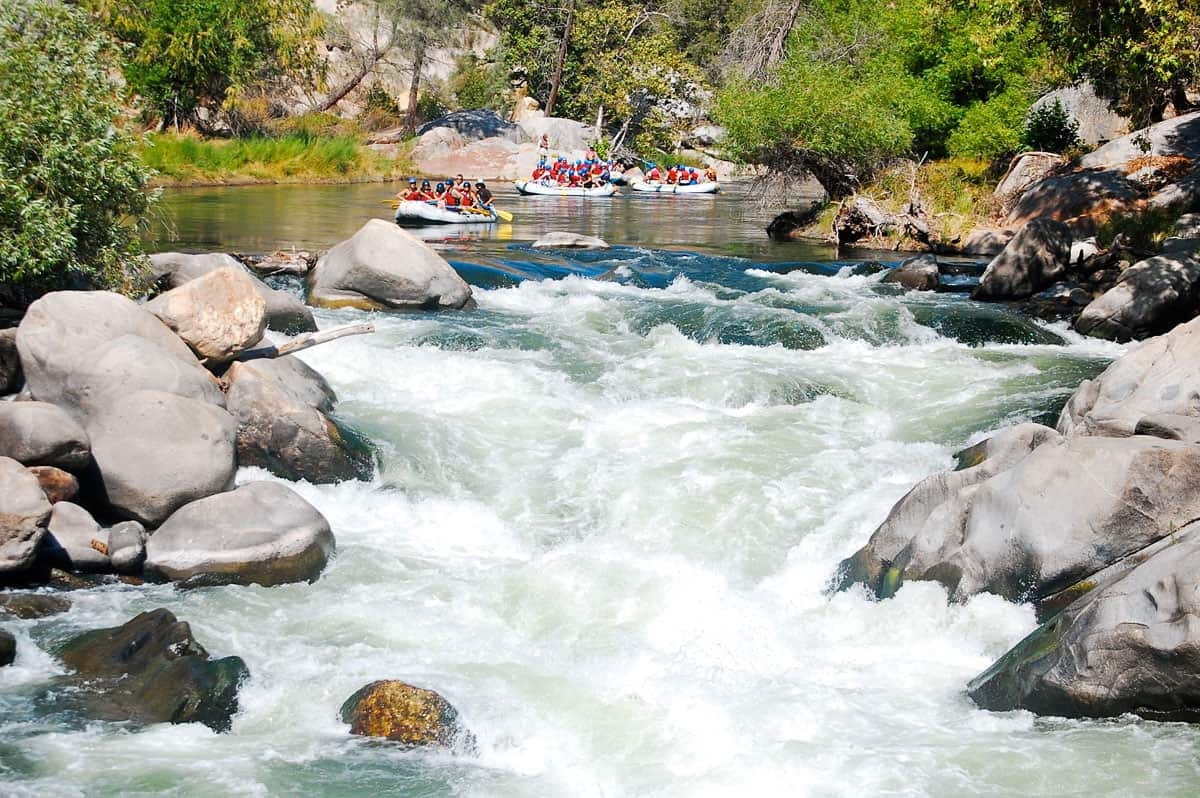News of the week
Rediscovered Andean tree frog. America's ten most troubled rivers. Protests for war and climate change
After 36 years, an Andean tree frog has been sighted again
Researchers had searched unsuccessfully for Lynch’s Columbia tree frog a number of times in recent decades, leading them to think that this amphibian was now extinct, but a recent effort has found the tree frog once again.
The frogs live about 360 miles east of Medellin, Columbia in cloud forests on the western slopes of the Cordillera Oriental Mountains, which are part of the Andes mountain range. The International Union for Conservation of Nature includes the large brownish frog on it list of Critically Endangered Species.
The tree frogs were formerly found at elevations between 8,300 to 9,000 feet, but after nine months of looking for the frog, Elson Meneses, a Fundación ProAves researcher, finally found one of the frogs at the edge of its known range. The research team that supported Meneses surmises that the frog is moving higher up in the mountains due to climate change.
Besides climate change, loss of habitat plagues the tree frog. A recent scientific paper estimates that almost all the bird species in Columbia have lost habitat because of deforestation and that a sizable portion, 35 percent of the birds, have lost about 35 percent of their habitat.
America’s most endangered rivers
American Rivers announced its annual list of America’s Most Endangered Rivers for 2022. The environmental organization makes its yearly report of the country’s ten most imperiled waterways as a way of focusing the interests and efforts of federal and state agencies, as well as environmental organizations.
Overused and taxed by heat and drought brought about by climate change, The Colorado River tops the list. California bears the dubious distinction of having two of its rivers, the Lower Kern River and the Los Angeles River, make the list. The Lower Kern suffers from excessive water withdrawal, while the Los Angeles River is threatened by ever more development in Los Angeles. Our biggest river, the Mississippi, is threatened by pollution and habitat loss.

Over 500 groups and organizations urge world leaders to bring an end to fossil fuels
A coalition of over 500 organizations has sent a letter to world leaders, urging a quick and total end to our dependence on fossil fuels. In an interesting turn, the letter ties the atrocity of Putin’s war on Ukraine with our present climate crisis.
Largely comprising environmental organizations, such as Amazon Watch and Coal River Mountain Watch, signers to the letter also include religious and political organizations. Considering how Putin is now using fossil fuel—such as cutting off natural gas supplies to Poland an Bulgaria—as part of his war strategy, connecting the climate crisis to the crisis in Ukraine is apt. The authors of the letter say:
The Russian military, business and political elites around President Putin are committing brutal crimes in Russia’s war of aggression in Ukraine, annihilating basic principles of state sovereignty and undermining democracy. At the same time, the climate crisis is wreaking an “atlas of human suffering”. These crises may seem entirely independent, but they share the samedangerous thread: dependence on fossil fuels. Fossil fuels fund not only Putin’s war crimes but other conflicts around the world, provoke war and militarism for fossil fuel resources, and drive the climate emergency.
The authors do not make any recommendations on the subject of the war, but they emphasize to governments to end the financing of fossil fuel projects and to phase out fossil fuels in general. They also urge governments to develop renewable energy. This letter is basically telling governments to start doing what they should have done 50 years ago.
A man protested inaction on climate change by self immolation near the U.S. Supreme Court
I write about a lot of very upsetting things, climate change, poaching, species on the brink of extinction, yet this bit of news is very difficult for me to write about. My mouth is dry and my palms sweaty as I type these words.
Wynn Bruce, a 50 year old man from Boulder, Colorado set himself on fire outside the U.S Supreme Court building on Friday, April, 22, Earth Day. Wynn died of his burns the next day at hospital.
On Sunday, a friend of Bruce, Kritee Kanko, who is a climate scientist and Zen Buddhist priest, said that Bruce had been planning the self-immolation for at least a year.
My motivation to write this newsletter is to bring to light many environmental topics and happenings that aren’t making it into bigger news sources. This story was part of the news. Reports were on CNN, Fox, and other large news organizations.
But here’s the thing. I don’t know if it really registered with anyone, if anyone paid attention. Maybe there is so much news out of Ukraine that anything else that happens is not considered all that newsworthy.
A student at the University of California San Diego protested the Vietnam war by self immolation. He did so just days after the massacre of students at Kent State, and perhaps that is why his actions were similarly overshadowed.
Or maybe, if my reactions are any indication, everybody is too freaked out about the whole thing, and they just want to forget it.
For more environmental science & news follow me on Twitter @EcoScripsit.





I, too, am shocked that Wynn Bruce's protest suicide is not bigger news. I suspect that the lack of interest from the media and society will be studied by historians 100 years from now.